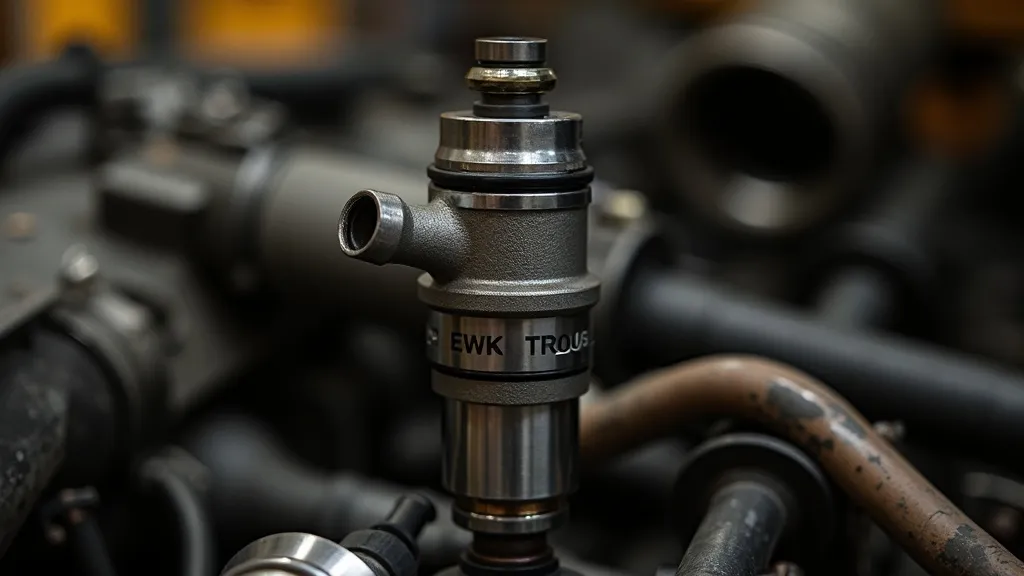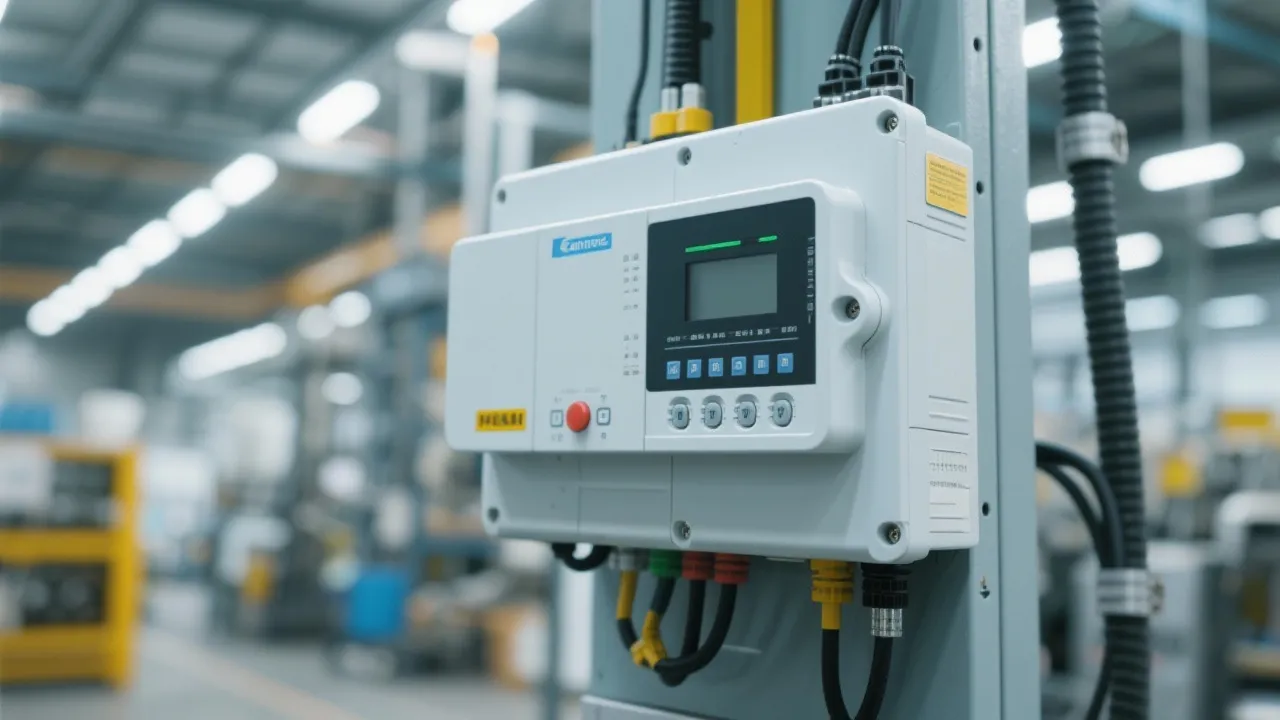Understanding Caterpillar Injector Functionality
This article delves into the intricacies of Caterpillar injectors, essential components in diesel engines known for their efficiency and durability. These injectors play a crucial role in fuel atomization within engines, enhancing performance and fuel efficiency. This comprehensive guide explores their function, maintenance, and common issues, offering valuable insights for professionals and enthusiasts alike.

Introduction to Caterpillar Injectors
Caterpillar injectors, a vital component of diesel engines, are renowned for their precision and durability. Engine manufacturers like Caterpillar have designed these injectors to optimize the fuel atomization process, thereby improving engine performance while ensuring efficient fuel consumption. As the demand for fuel-efficient and high-performance engines increases, understanding the operation and maintenance of Caterpillar injectors is crucial for professionals and enthusiasts in the automotive industry.
The advancement of technology in engine design and manufacturing has prompted the creation of advanced fuel systems that include injectors capable of functioning efficiently under varying conditions. Caterpillar injectors are at the forefront of these technologies, utilizing engineering innovations to enhance engine capabilities. Their design evolves continuously to meet regulatory standards concerning emissions while maximizing fuel efficiency, making them integral to modern propulsion systems.
Understanding the Functionality of Caterpillar Injectors
The primary function of a Caterpillar injector is to introduce fuel into the combustion chamber of an engine with precision timing and quantity. This process requires the conversion of liquid fuel into a fine mist, which mixes thoroughly with air to ensure complete combustion. This atomization enhances not only the efficiency of the engine but also minimizes exhaust emissions. The injectors achieve high-pressure fuel delivery through a finely tuned mechanism that accounts for various engine operating conditions, ensuring that the engine operates smoothly under any situation, from idling to full throttle.
The complexity of the injector operation can be attributed to multiple factors including temperature, pressure, and engine load. The injectors utilize solenoid or piezoelectric actuators that open and close the fuel nozzle at precise intervals, allowing for controlled fuel delivery. This level of precision is necessary to optimize combustion timing, which can significantly affect the overall performance and efficiency of the engine.
Also noteworthy is the role of fuel viscosity and temperature, which can influence the injector's performance. Cold starts, for instance, require a different spray pattern and fuel atomization point than a running engine at operating temperature. Caterpillar injectors are equipped to adjust their output based on such variables, delivering consistent performance across different temperatures and load conditions.
Maintenance and Longevity of Caterpillar Injectors
Regular maintenance of Caterpillar injectors is critical to ensure their longevity and optimal performance. This includes timely cleaning to remove carbon deposits and checking for fuel leakage or other signs of wear. Proper maintenance helps in preventing issues like misfiring, loss of power, or increased fuel consumption. It is recommended to follow the manufacturer’s service guidelines and employ professional technicians for any advanced repair or maintenance tasks.
In addition, using high-quality fuel can significantly affect the longevity of the injectors. Fuels containing additives that prevent the formation of carbon deposits can help keep injectors cleaner longer. Additionally, regular fuel filter changes are essential to trap contaminants before they can enter the injector system, safeguarding the injectors from potential damage due to particulate matter.
Advanced diagnostics technologies now allow for real-time monitoring of injector performance directly through the engine's onboard systems. This capability not only provides valuable insights into injector performance but also helps in early detection of potential problems. Keeping records of fuel consumption rates and injector performance can provide useful data for predicting when maintenance or replacement might be necessary.
Common Issues and Troubleshooting
Despite their robust design, Caterpillar injectors can encounter issues such as clogging, leakage, or faulty spray patterns. Clogged injectors often lead to poor engine performance and increased emissions. The symptoms of injector-related problems can manifest as rough idling, reduced fuel efficiency, and noticeable loss of power. These issues can typically be diagnosed using diagnostic tools and fixed through professional cleaning or replacement.
Leakage is another common issue encountered with injectors. This can lead not only to performance degradation but also to potentially dangerous situations, such as engine fires or environmental hazards due to fuel spillage. Any signs of fuel leaking around injector points should prompt immediate professional assessment and repair. Similarly, faulty spray patterns can disrupt the combustion process, leading to incomplete combustion and increased emissions, which can result in hefty fines in states with strict emissions standards.
Understanding these issues can empower operators and technicians to address injector-related problems proactively. Regular inspections, along with the use of quality fuel, can significantly reduce the occurrence of these problems. If issues are detected early, repairs can be made before they escalate, potentially avoiding costly engine repairs and extended downtime.
Caterpillar Injector Comparison Table
| Model | Features | Applications |
|---|---|---|
| C7 ACERT | High precision, energy-efficient, incorporates advanced fuel atomization technology | Heavy-duty vehicles |
| C9 ACERT | Durable, cost-effective, designed for high-flow applications | Marine engines, generators |
| C15 | Enhanced performance, low emissions, optimized for high horsepower | Construction machinery, trucks |
Injector Technology Innovations
The field of injector technology has seen significant innovations over the years. Recent developments incorporate electronic controls that allow for more precise fuel injection profiles. Such systems have various modes of operation, adjusting the fuel delivery based on specific engine conditions to enhance performance and efficiency.
One major leap in technology is the use of multiple injections per cycle, which contributes to better atomization and combustion. By injecting fuel into the combustion chamber several times within a single engine cycle, it enhances the combustion process, leading to reduced emissions and improved fuel efficiency. This technique allows for more controlled combustion, which is essential in heavy-duty applications that require quick responses during varying load conditions.
Furthermore, the introduction of adaptive learning in engine control systems allows injectors to adjust performance based on historical data and real-time feedback from operating conditions. This capability means that injectors can become more efficient over time, automatically compensating for wear on internal components.
Frequently Asked Questions
Q1: What is the lifespan of Caterpillar injectors?
A: The lifespan can vary based on usage and maintenance but typically ranges from 100,000 to 150,000 miles for heavy-duty applications. Regular checks and timely upkeep can prolong their functional life.
Q2: How often should Caterpillar injectors be serviced?
A: Regular service intervals are recommended every 20,000 to 30,000 miles, depending on operating conditions. However, higher usage or adverse conditions may necessitate more frequent checks.
Q3: Can aftermarket injectors be used in Caterpillar engines?
A: While aftermarket injectors are available, using genuine Caterpillar parts is advised to maintain performance and reliability. Aftermarket parts may not meet the same quality standards and could potentially cause performance issues.
Q4: What signs indicate a need for injector replacement?
A: Common signs include excessive smoke from the exhaust, rough engine operation, increased fuel consumption, and difficulty starting the engine. If these symptoms are present, a thorough inspection is necessary.
Q5: What preventive measures can be taken to ensure injector health?
A: Regular maintenance such as cleaning, using quality fuel, and timely replacement of fuel filters can help prevent many common injector issues. Additionally, keeping accurate records of fuel consumption can also assist in early problem detection.
Conclusion
In conclusion, Caterpillar injectors represent the pinnacle of engineering in diesel engine technology. Their role in optimizing fuel delivery and engine performance is crucial in demanding industrial applications. A comprehensive understanding of their operation, regular maintenance, and timely troubleshooting will ensure that these injectors function optimally, providing lasting value and performance to their users.
As the landscape of diesel engine technology continues to evolve with stricter emission regulations and the push for greater efficiency, the significance of advanced fuel injectors will only increase. Those who work with Caterpillar equipment must stay informed of the latest technologies and best practices to ensure peak performance from their engines. Continued education and professional development in the field will empower workers to maintain the integrity of their machinery and uphold operational standards that meet both industry demands and environmental regulations.










